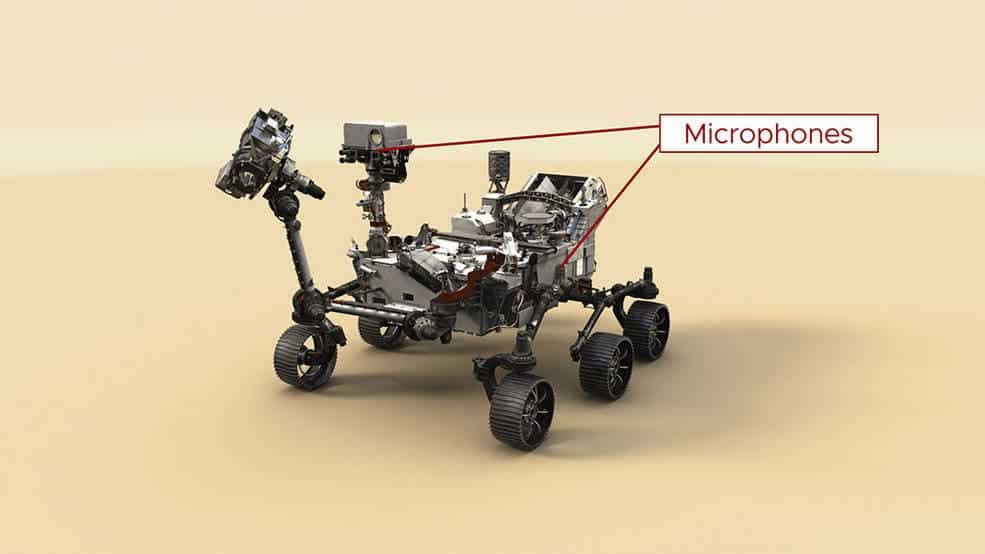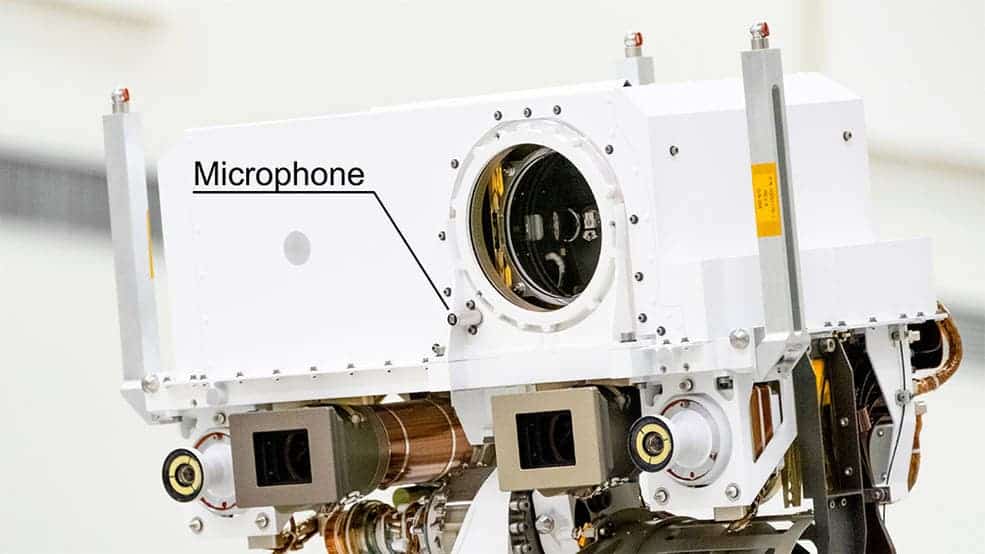
This year, NASA is really exploring the Red Planet in unprecedented detail. Not only has it sent the Perseverance Rover to Mars, but it also managed to carry out the first flight on a planet other than the Earth, thanks to the Ingenuity helicopter. But NASA has a few more tricks up its sleeve. Two microphones aboard the six-wheeled Perseverance Rover have recorded almost five hours of Martian gusts.
“It’s like you’re really standing there,” said Baptiste Chide, a planetary scientist who studies data from the microphones at L’Institut de Recherche en Astrophysique et Planétologie in France. “Martian sounds have strong bass vibrations, so when you put on headphones, you can really feel it. I think microphones will be an important asset to future Mars and solar system science.”

Perseverance is the first spacecraft to record the sound of Mars, though remarkably, it uses commercial-grade microphones.
In addition to the natural sounds on Mars, the microphones also recordethe rover’s engines and wheels operating on Mars, as well as the sound of the Ingenuity helicopter taking off and landing. The wheel turning sound isn’t what you’d expect it to be — it sounds very metallic, as you can hear below, because Perseverance’s wheels are actually made of metal.
In addition, the microphones also records the laser pulses emitted by SuperCam — a special camera equipped on Perseverance that studies rocks by zapping them with a laser and analyzing the resulting vapor with a camera. When a rock is zapped, it makes a sound — and this sound can also help us learn something about the properties of the rock being analyzed, NASA explains.
Sound, or rather the propagation of sound, can teach us a few things about the properties of the Martian atmosphere. The very fact that the microphones can pick up the sounds from the helicopter was surprising to some searchers, because the planet’s atmosphere is much thinner than Earth’s, and sounds propagate as vibrations through the air. Here’s what the Ingenuity helicopter sounds like when it takes off.
“Sound on Mars carries much farther than we thought,” said Nina Lanza, a SuperCam scientist who works with the microphone data at LANL. “It shows you just how important it is to do field science.”
Another benefit of the microphones is that they can augment the information coming from the wind and pressure sensors on the rover.
“It’s kind of like comparing a magnifying glass to a microscope with 100 times magnification,” said MEDA’s principal investigator, Jose Rodriguez-Manfredi of the Centro de Astrobiología (CAB) at the Instituto Nacional de Tecnica Aeroespacial in Madrid. “From the weather scientist’s point of view, each perspective – detail and context – complements one another.”
Last but not least, the sounds can also alert NASA engineers to potential faults with the rover.
“We would love to listen to these sounds regularly,” said Vandi Verma, Perseverance’s chief engineer for robotic operations at JPL. “We routinely listen for changes in sound patterns on our test rover here on Earth, which can indicate there’s an issue that needs attention.”

Perseverance is currently exploring Mars, looking for potential signs of microscopic life, and paving the way for human exploration of Mars. It is the first rover that will collect and cache Martian rocks, which will be brought back to Earth for analysis by subsequent NASA and ESA missions.


